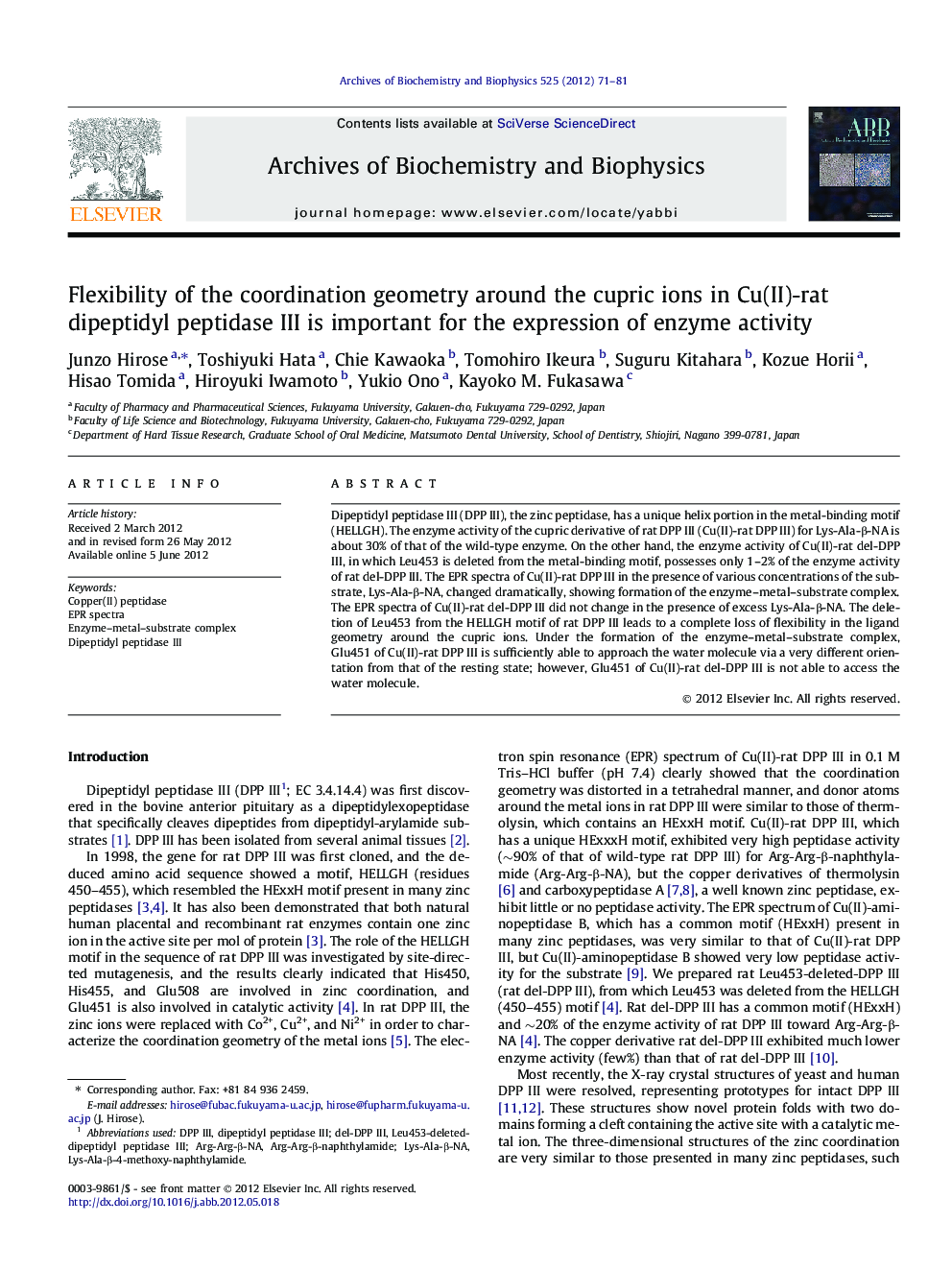| Article ID | Journal | Published Year | Pages | File Type |
|---|---|---|---|---|
| 1925505 | Archives of Biochemistry and Biophysics | 2012 | 11 Pages |
Dipeptidyl peptidase III (DPP III), the zinc peptidase, has a unique helix portion in the metal-binding motif (HELLGH). The enzyme activity of the cupric derivative of rat DPP III (Cu(II)-rat DPP III) for Lys-Ala-β-NA is about 30% of that of the wild-type enzyme. On the other hand, the enzyme activity of Cu(II)-rat del-DPP III, in which Leu453 is deleted from the metal-binding motif, possesses only 1–2% of the enzyme activity of rat del-DPP III. The EPR spectra of Cu(II)-rat DPP III in the presence of various concentrations of the substrate, Lys-Ala-β-NA, changed dramatically, showing formation of the enzyme–metal–substrate complex. The EPR spectra of Cu(II)-rat del-DPP III did not change in the presence of excess Lys-Ala-β-NA. The deletion of Leu453 from the HELLGH motif of rat DPP III leads to a complete loss of flexibility in the ligand geometry around the cupric ions. Under the formation of the enzyme–metal–substrate complex, Glu451 of Cu(II)-rat DPP III is sufficiently able to approach the water molecule via a very different orientation from that of the resting state; however, Glu451 of Cu(II)-rat del-DPP III is not able to access the water molecule.
► Dipeptidyl peptidase III has the unique metal-binding motif (HELLGH). ► The formations of the enzyme–metal–substrate complex. ► The flexibility of the coordination geometry around the metal ions in the enzyme. ► The deletion of Leu453 from the HELLGH motif leads to a loss of the enzyme activity.
